No 'Book Announcements At Expo, But The Mac mini Makes Me Salivate
with Charles W. Moore
Steve Jobs’ Macworld expo keynote had to be a bit of a disappointment for those who had been hopefully anticipating a G5 PowerBook unveiling, or at least an announcement. I wasn’t among them. As I said here before Christmas, I will be surprised if we see G5 ‘Books before the Worldwide Developers Conference in May, and I think an actual product release to the public will come somewhat later in the year than that.
What I had been expecting was some PowerBook speed bumps, but nary a whisper emerged from Mr. Jobs’ lips regarding any specific ‘Book related announcements. It reminds me a bit of Expo 2000, before which the rumoristas had been confidently predicting the debut of the Pismo (which many had expected to be a G4). However, as with this year, that Expo passed with no PowerBook or iBook announcements
The rumor mills weren’t entirely wrong in 2000, of course. The Pismo did emerge a couple of months later at Macworld Expo Tokyo -- albeit still a G3. It wouldn’t be until Macworld 2001 that a G4 PowerBook finally materialized.
There is no longer a Macworld Expo Tokyo, but I think we can still expect some PowerBook speed bumps, perhaps in late February/early March and almost certainly no later than April. The buzz that I’ve heard it is that the big ‘Books will get upgraded to 1.67 GHz G4s, and the 12-inch PowerBook to 1.5 GHz. I had been hoping for 1.8 GHz at the top end, but 1.67 is a step in the right direction. Other tweaks expected include 128 megabytes of VRAM, 5400 RPM hard drives, and an available 100 gigabyte drive in the 15-inch and 17-inch models. Nothing spectacular, so I can see why Apple decided to hold the PowerBook announcements back for a separate, quieter release.
Presumably, the current PowerBooks are still selling well, and the even longer-in-the-tooth iBooks definitely are, so there’s really no compelling reason for Apple to rush a speed bump announcement.
In the meantime, Expo gives us plenty to digest, especially the new Mac mini, which, given its tiny dimensions, can arguably be considered a portable Mac. Or as Low End Mac's Dan Knight dubbed it, a "hand-holdable, transportable desktop computer," weighing 2.9 pounds not counting the external power supply (which I haven't seen yet but hope is less physically formidable than the ugly blob that shipped with the G4 Cube). Speaking of which, the Mac mini announcement harks back to Macworld Expo 2000, in this case Expo New York, and the debut of the Cube, which was last time I said a desktop machine might be considered a “honorary” Mac portable.
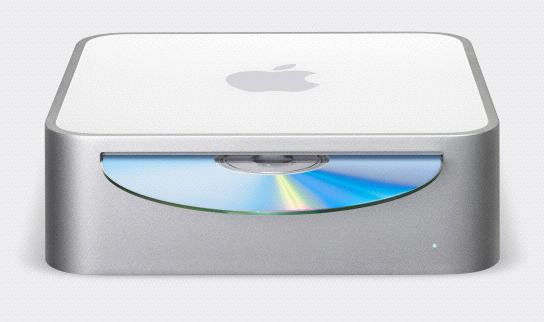
It wasn’t actually true of the Cube, which despite the relatively compact dimensions of its main module, was actually fairly bulky when you added a monitor, the included Harmon-Kardan speakers, the huge power supply, the keyboard and mouse, and so forth.
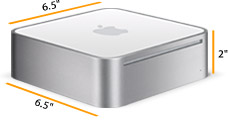
The same caveat applies to the Mac Mini to some degree, but the mini is less than half the size of the Cube (6”x6”x2” vs 8” x8”x9” respectively), doesn’t come with satellite speakers (there is a minuscule internal one), and the keyboard and mouse size will be up to the individual purchaser, since it comes with neither of those either. Indeed, the Mac mini is a lot smaller than the external 20 MB (yes, that's megabyte) hard drive of my old Mac Plus (roughly 9.6"x10"x3").
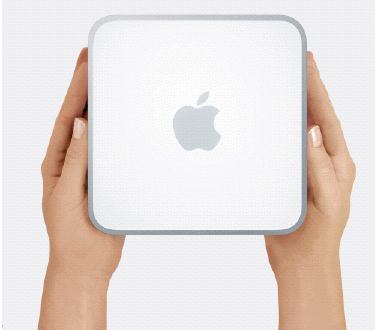
Like the Cube did in July, 2000, the Mac mini elicits in me a gotta-have-it urge on first exposure. I eventually did get a Cube, and while I still think it was the coolest-looking desktop computer ever, I never really warmed to it the way that I have to my PowerBooks and iBook, which makes me cautious about actually thinking about purchasing a Mac mini, extremely cool as I think it is. I love small computers, and the Mac mini is the smallest Mac ever. At least if you don’t count the monitor, keyboard, etc. Styling-wise, it’s not a spectacular as the Cube, but it’s a more attractive package in practical terms. And of course it sells for as little as $499. compared with $1,799 for the original Cube in 2000.
At $500 (or $600 if you opt for the 1.42 GHz CPU and and 80 gigabyte hard drive), the Mac mini seems pretty inexpensive, but remember that you’ll need to add a monitor (VGA or DVI), keyboard, mouse, and unless your needs are very modest, some extra RAM (it supports up to 1 GB PC2700 RAM). That will almost certainly bring the bottom line close to the $799 tag of the base eMac, so the low-ball sticker price of the Mac mini is partly illusory. Indeed, depending upon what monitor you choose, you’re going to be into iBook or even iMac and low-end PowerBook Price territory. Apple’s cheapest monitor is currently the 20-inch Cinema Display at a whopping $999.00, although there are a gaggle of 17-inch third-party monitors that will work with the mini including a 17" Mitsubishi Diamond Pro flat screen CRT monitor Apple sells for $189. You can add Apple's pedestrian mouse and excellent (IMHO) Pro keyboard for $59.
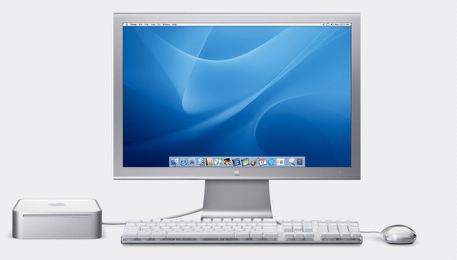
The Mac Mini comes with an ATI Radeon 9200 graphics card with 32MB of VRAM. Both models come with a slot-load Combo drive for watching DVD movies and burning CDs (a SuperDrive is optional), and a 40GB hard drive is standard. There are one FireWire 400 and two USB 2.0 ports, a DVI monitor interface that also supports VGA, 10/100BASE-T Ethernet and a 56K V.92 modem, optional support for an AirPort Extreme Card for 54 Mbps 802.11g wireless networking, and an internal Bluetooth module.
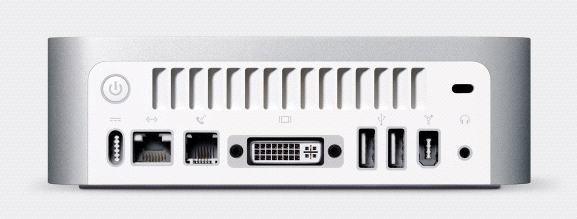
The Mac mini nicely compliments the eMac and iMac at the consumer end of Apple’s desktop line, and I expect they will sell a ton of them. It could turn out to be the iPod mini of desktop computers. It will cannibalize some eMac sales, but the eMac is a mature product. I don’t anticipate that iMac sales will suffer much. The mini will appeal largely to a different clientele.
One question is whether it will erode iBook sales any. Many people buy laptops these days mainly as desktop substitute machines, attracted by the compactness factor as much as the portability. The Mac mini will give them an alternative inexpensive small Mac that is almost as fast as the fastest current PowerBooks can be had with a larger monitor for the same or less money. The fact that a consummate ‘Book aficionado like me hears the mini’s siren call symbolizes the dynamic.
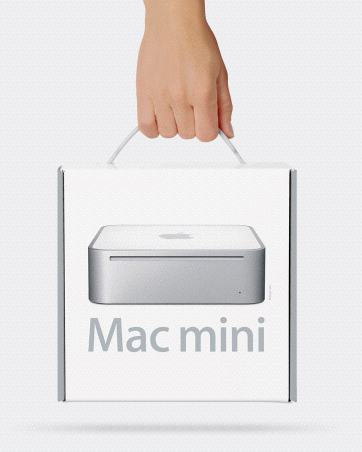
Mac mini specs and prices:
The 1.25 GHz Mac mini, for a suggested retail price of $499 (US), includes:
• 1.25 GHz PowerPC G4 processor;
• 256MB of 333 MHz DDR SDRAM, expandable to 1GB;
• 40GB Ultra ATA hard drive;
• Combo (DVD-ROM/CD-RW) optical drive;
• ATI Radeon 9200 graphics processor with 32MB video memory;
• One FireWire 400 and two USB 2.0 ports;
• 10/100 BASE-T Ethernet networking and 56K V.92 modem;
• Internal support for AirPort Extreme wireless networking and Bluetooth;
• DVI or VGA out (adapter included), composite/S-video out with optional adapter; and
• Built-in speaker and headphone/line out.
The 1.42 GHz Mac mini, for a suggested retail price of $599 (US), includes:
• 1.42 GHz PowerPC G4 processor;
• 256MB of 333 MHz DDR SDRAM, expandable to 1GB;
• 80GB Ultra ATA hard drive;
• Combo (DVD-ROM/CD-RW) optical drive;
• ATI Radeon 9200 graphics processor with 32MB video memory;
• One FireWire 400 and two USB 2.0 ports;
• 10/100 BASE-T Ethernet networking and 56K V.92 modem;
• Internal support for AirPort Extreme wireless networking and Bluetooth;
• DVI or VGA out (adapter included), composite/S-video out with optional adapter; and
• Built-in speaker and headphone/line out.